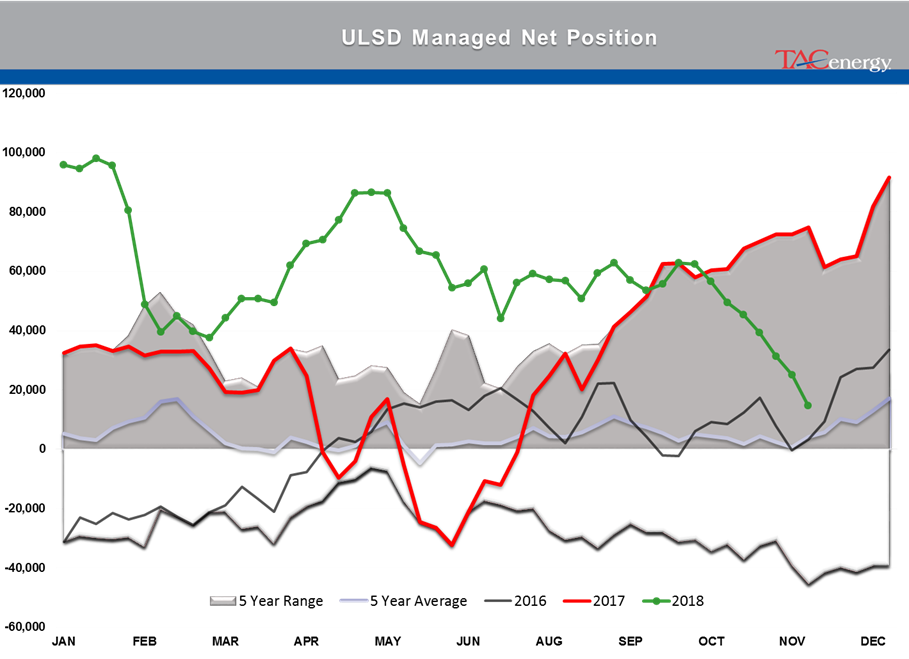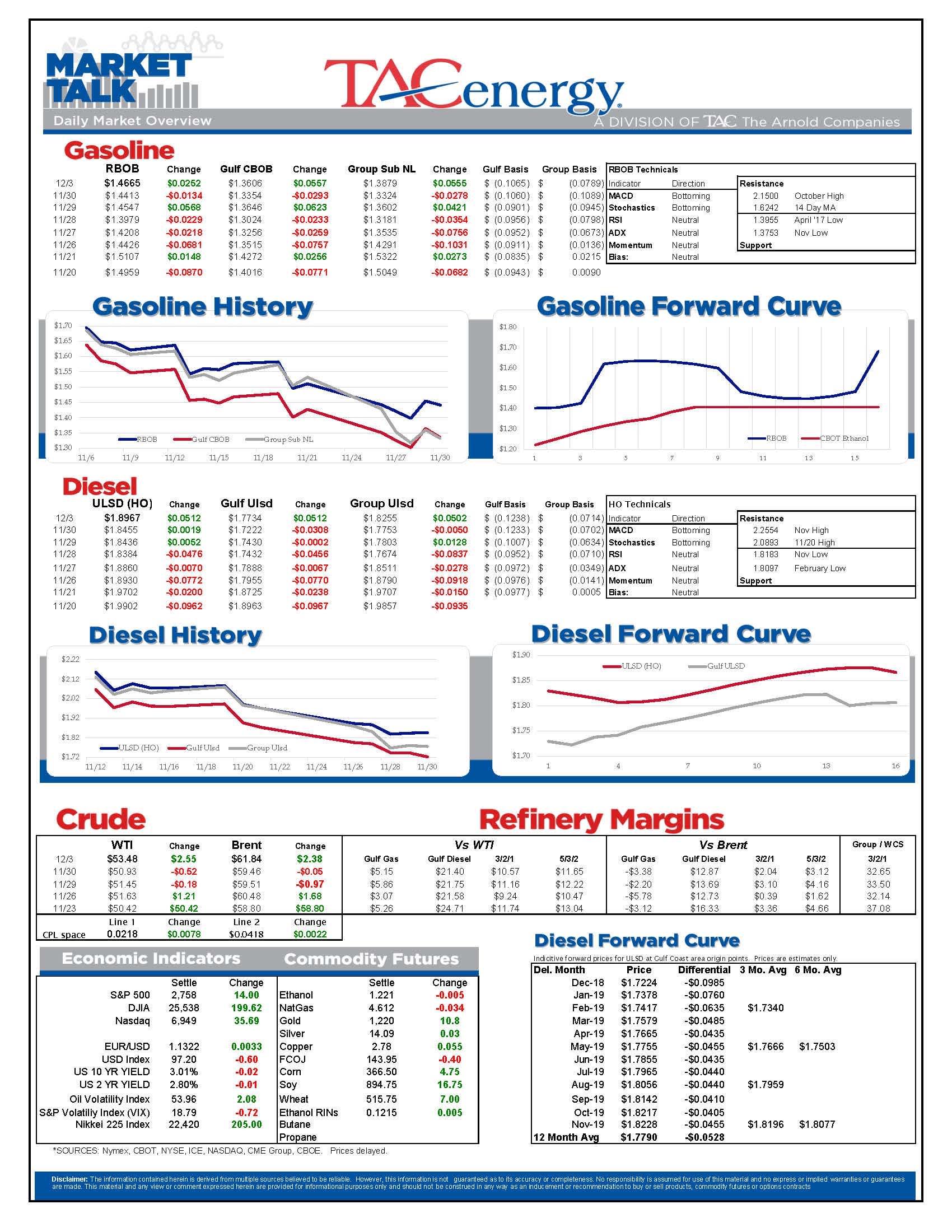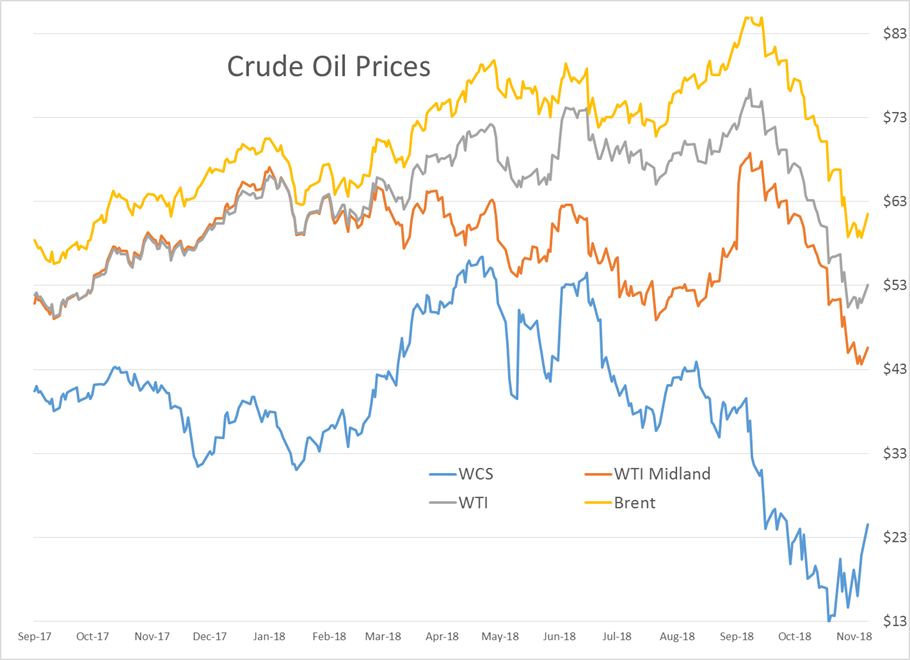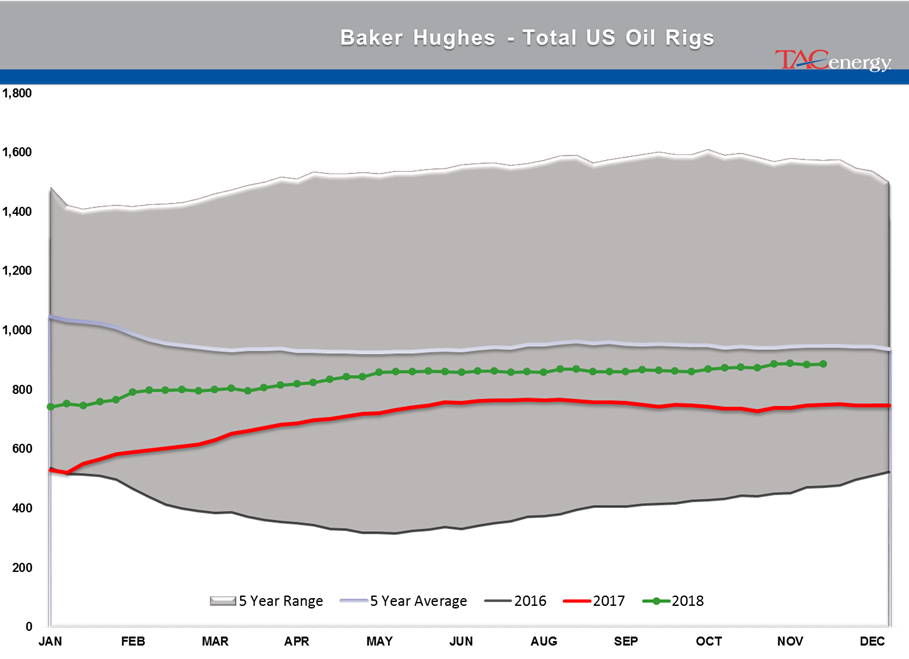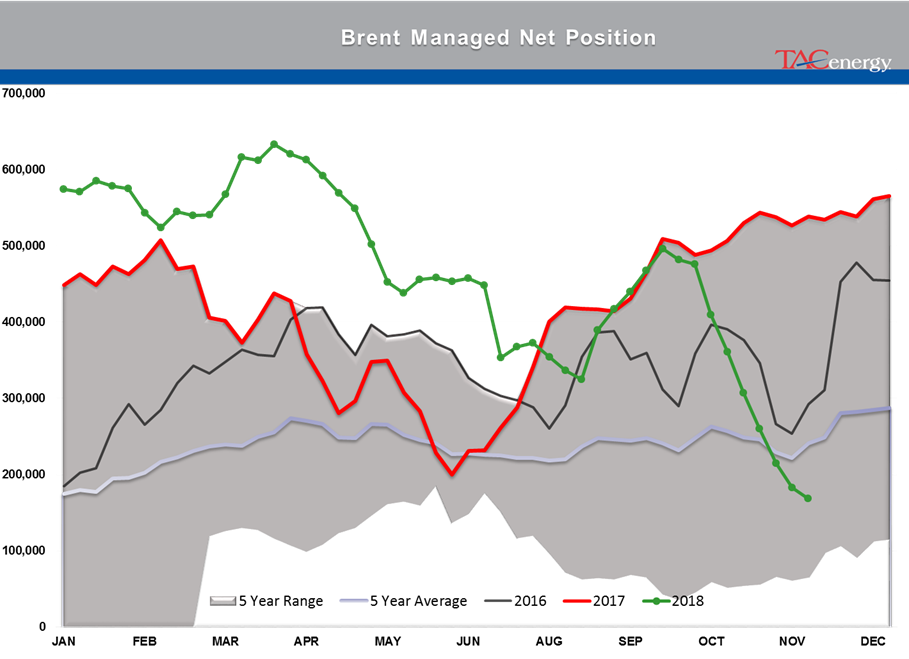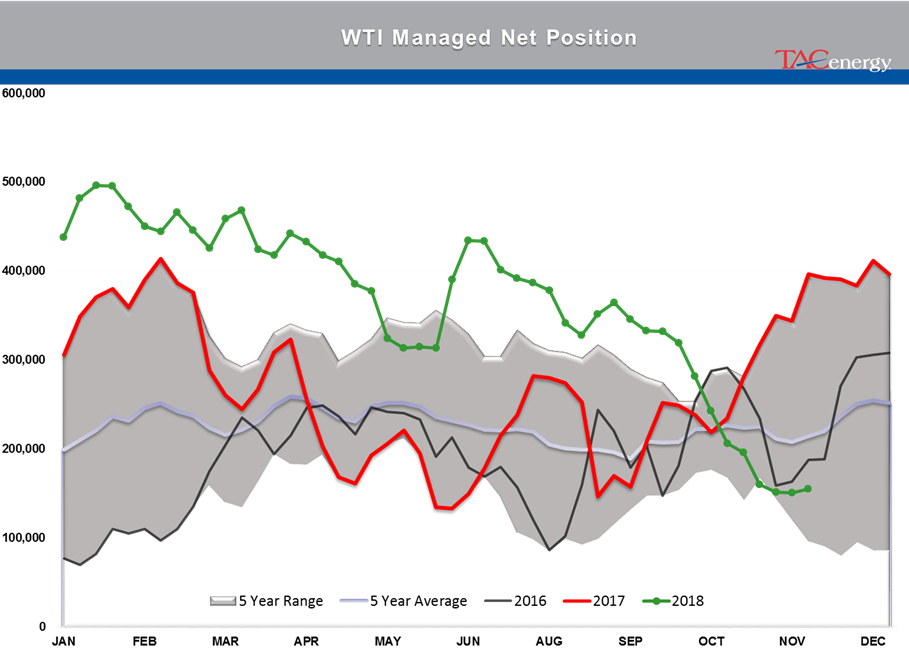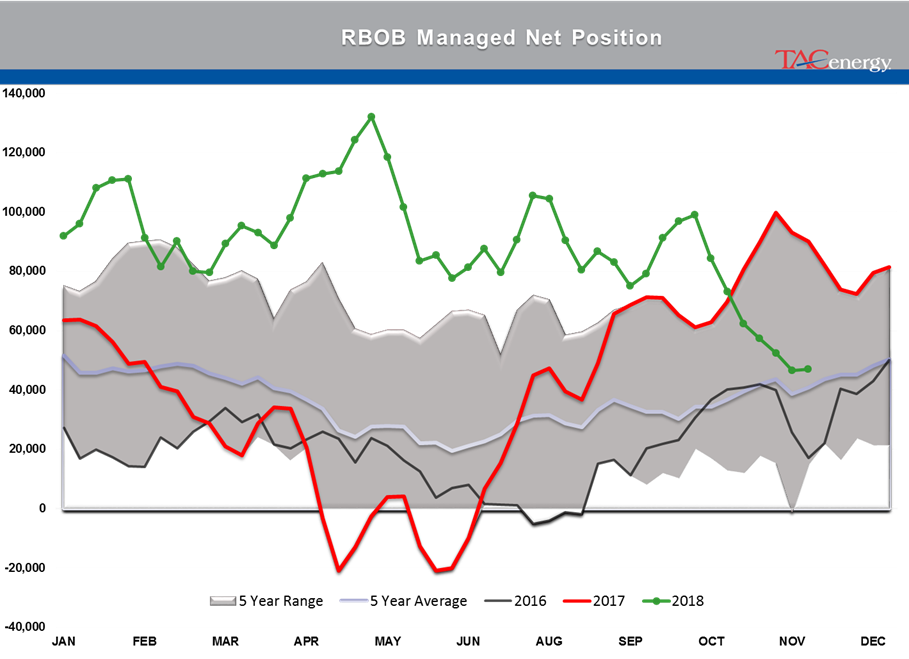Trade Deals And Output Cuts Pushing Petroleum Prices Higher

A flurry of headlines on trade deals and output cuts is pushing petroleum prices sharply higher to start the week. Refined products are up more than a nickel at the moment, after trading up nearly 8 cents overnight as both energy and equity markets are finding reasons to rally. Here’s are the highlights:
China & US taking a break from trade tantrums: Bullish economic activity, reduces the risk of recession & the drop in demand that would come with it.
Russia & OPEC agree to extend supply cuts. Bullish…at least until they announce the details, which haven’t been agreed to yet.
Qatar leaving OPEC: Neutral? This could be a bigger story in natural gas markets given Qatar’s status, but for now doesn’t seem as though it will impact supplies.
Canada is imposing temporary output cuts in Alberta: Any output cut is bullish oil prices, but this reaction to pipeline bottlenecks may have more impact on US refinery margins than it does on outright prices as the extreme discounts in WCS has given a huge advantage to any plants with access to those distressed barrels.
New congress, new threats to North American Trade? Neutral for now. It’s impossible to say how the negotiations in congress will turn out. Oil & refined product flows between the US, Mexico and Canada have been increasing over the past decade so the pressure will be high to get a deal done.
Baker Hughes Rig Count: 2 more oil rigs put to work last week, marking a 5th consecutive month of increases. The price drop in the past 2 months suggests we may see rig counts level off or begin to dip early in 2019. Neutral. One consequence of record high US Oil production? Sellers in W. Texas are actually having to pay people to take their natural gas.
Commitment of traders: WTI and RBOB snapped their streak of money manager liquidations (it’s probably no coincidence this happened the same week that both contracts had a weekly gain for the first time in 2 months) while Brent and ULSD continued to see reduced speculative bets on higher prices. Bullish. Fund liquidation was a major theme during the fall sell-off. Now that those large speculators presumably have dry powder, they could easily push prices higher should they choose to begin buying again.
Latest Posts
Week 17 - US DOE Inventory Recap
The Energy Complex Is Trading Modestly Lower So Far This Morning With WTI Crude Oil Futures Leading The Way
Energy Futures Are Drifting Quietly Higher This Morning
Refined Products Holding Close To Break Even While Oil Prices Are Losing Just Under 1%
Social Media
News & Views
View All
Week 17 - US DOE Inventory Recap

The Energy Complex Is Trading Modestly Lower So Far This Morning With WTI Crude Oil Futures Leading The Way
The energy complex is trading modestly lower so far this morning with WTI crude oil futures leading the way, exchanging hands $1.50 per barrel lower (-1.9%) than Tuesday’s settlement price. Gasoline and diesel futures are following suit, dropping .0390 and .0280 per gallon, respectively.
A surprise crude oil build (one that doesn’t include any changes to the SPR) as reported by the American Petroleum Institute late Tuesday is taking credit for the bearish trading seen this morning. The Institute estimated an increase in crude inventories of ~5 million barrels and drop in both refined product stocks of 1.5-2.2 million barrels for the week ending April 26. The Department of Energy’s official report is due out at it’s regular time (9:30 CDT) this morning.
The Senate Budget Committee is scheduled to hold a hearing at 9:00 AM EST this morning regarding a years-long probe into climate change messaging from big oil companies. Following a 3-year investigation, Senate and House Democrats released their final report yesterday alleging major oil companies have internally recognized the impacts of fossil fuels on the climate since as far back as the 1960s, while privately lobbying against climate legislation and publicly presenting a narrative that undermines a connection between the two. Whether this will have a tangible effect on policy or is just the latest announcement in an election-yeardeluge is yet to be seen.
Speaking of deluge, another drone attack was launched against Russian infrastructure earlier this morning, causing an explosion and subsequent fire at Rosneft’s Ryazan refinery. While likely a response to the five killed from Russian missile strikes in Odesa and Kharkiv, Kyiv has yet to officially claim responsibility for the attack that successfully struck state infrastructure just 130 miles from Moscow.
The crude oil bears are on a tear this past week, blowing past WTI’s 5 and 10 day moving averages on Monday and opening below it’s 50-day MA this morning. The $80 level is likely a key resistance level, below which the path is open for the American oil benchmark to drop to the $75 level in short order.
Click here to download a PDF of today's TACenergy Market Talk.

Energy Futures Are Drifting Quietly Higher This Morning
Energy futures are drifting quietly higher this morning as a new round of hostage negotiations between Israel and Hamas seem to show relative promise. It seems the market is focusing on the prospect of cooler heads prevailing, rather than the pervasive rocket/drone exchanges, the latest of which took place over Israel’s northern border.
A warmer-than-expected winter depressed diesel demand and, likewise, distillate refinery margins, which has dropped to its lowest level since the beginning of 2022. The ULSD forward curve has shifted into contango (carry) over the past month as traders seek to store their diesel inventories and hope for a pickup in demand, domestic or otherwise.
The DOE announced it had continued rebuilding it’s Strategic Petroleum Reserve this month, noting the addition of 2.3 million barrels of crude so far in April. Depending on what the private sector reported for last week, Wednesday’s DOE report may put current national crude oil inventories (include those of the SPR) above the year’s previous levels, something we haven’t seen since April of 2022, two months after Ukraine war began.
The latest in the Dangote Refinery Saga: Credit stall-out, rising oil prices, and currency exchange.
Click here to download a PDF of today's TACenergy Market Talk.
